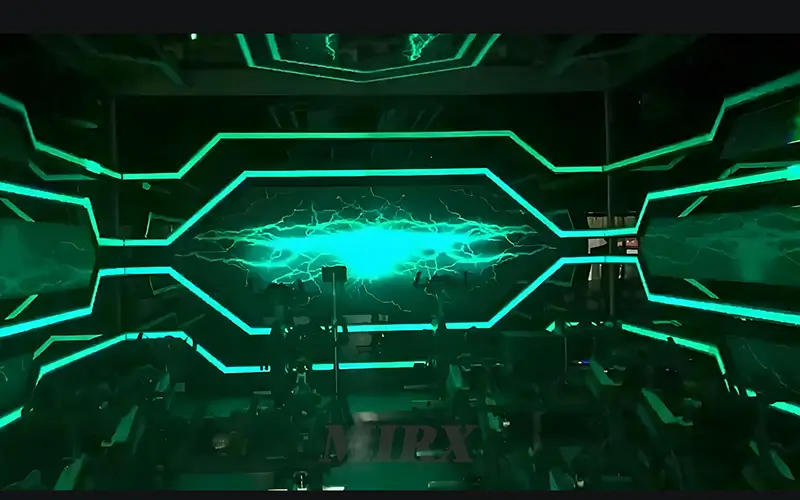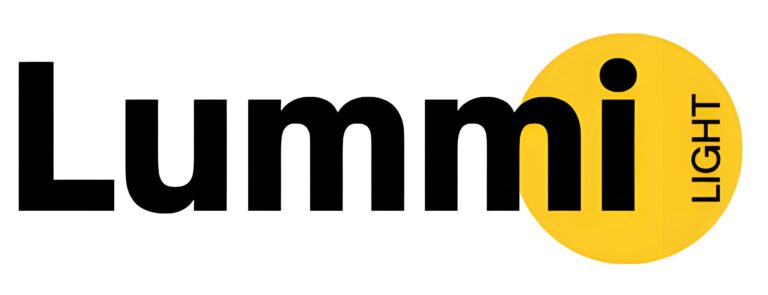In the era of intelligent lighting, we have many lighting control systems to choose from. Different lighting systems are suitable for other systems. As the two major lighting control protocols, DMX vs. DALI lighting systems have dynamic effects and fine management as their core competitiveness. How can we choose between DMX vs. DALI lighting systems?
Table of Contents
What is a DMX Lighting Control System?
DMX (Digital Multiplex) is a digital communication standard originally developed for stage lighting control. DMX lighting control systems are now widely used in entertainment, architectural and landscape lighting.
As we all know, DMX512 is its most common version, which means that each channel can transmit 512 independent control parameters.
However, it should be noted that DMX is essentially a one-way communication protocol. The controller can only send instructions to the lamps and cannot receive feedback information. If a lamp fails, the control system will not actively prompt, so maintenance requires manual inspection.

What is a DALI Control System?
DALI (Digital Addressable Lighting Interface) is a digital communication protocol designed for architectural lighting.
It started in the 1990s, was standardized by the International Electrotechnical Commission (IEC), and has become one of the mainstream standards for intelligent building lighting.
DALI is a two-way communication system that allows the controller to not only send commands to lamps, but also receive feedback on the status of lamps. Each DALI network can support up to 64 independent devices, each of which can be assigned to 16 different groups and can store 16 scene settings.
DALI uses a simple two-wire connection and does not require a specific topology. It can adopt a star, tree or hybrid structure. The flexibility of the DALI control system makes installation easy while reducing the cost of rewiring.
What are the Main Differences Between DMX vs DALI?
DMX and DALI lighting control systems are more common in the market. Generally, large lighting systems use DMX systems, while for short distances and small projects, DALI is more often chosen. Now let’s compare DMX vs. DALI lighting.
| Comparison Dimension | DMX | DALI |
|---|---|---|
| Control Logic | Channel control (one signal controls multiple lights) | Single light address control |
| Signal Delay | ≤23ms | ≥100ms |
| Max Devices | 32 controllers / 512 channels | 64 unique addresses / 1 bus |
| Anti-Interference | Requires shielded twisted pair, easily affected by EMI | Regular cables, industrial-grade stability |
| System Scalability | Requires more controllers and wiring | Expandable via software upgrade |
DMX is better at achieving dynamic lighting effects, while DALI is more suitable for a stable, energy-saving smart building environment. As for which one you choose, you should consider it comprehensively based on the actual needs of the project.
What Scenarios Should I Choose DMX VS DALI?
Different scenarios have different choices. Regarding DMX and DALI, we will analyze the advantages and disadvantages of DMX vs DALI in detail, as well as the applicable scenarios for each.

Advantages and disadvantages of DMX
DMX512 lighting control system supports complex lighting programming and is generally used for large-scale light show control systems. And the entire system is relatively mature.
Its disadvantage is that the wiring and original costs account for a high proportion, and it must be debugged by professionals.
Installation scenarios for DMX:
- Stages and theaters: performances that require precise synchronization and real-time control.
- Nightclubs and bars: dynamic lighting effects that need to be synchronized with the rhythm of the music.
- Large-scale outdoor light shows: highly coordinated multi-lamp control is required.
- Dynamic lighting on building facades: precise color and brightness gradient effects are required.
Advantages and disadvantages of DALI
Dali lighting control system can realize real-time energy consumption monitoring, and the wiring cost is relatively low. And it supports remote OTA upgrade.
But it also has disadvantages. It is only suitable for lighting control in small scenes and cannot handle fast dynamic effects.
Installation scenarios for DALI:
- Commercial office buildings: require a work environment with flexible zoning and energy management.
- Public facilities: require simple control and lighting adjustment for different functional areas.
- Medical institutions: require lighting systems with reliability and simple operation.
- Hotels and residences: require comfortable lighting with scene memory and simple operation.
Is DMX Cheaper Than DALI?
When considering the overall cost of a lighting control system, two main aspects need to be evaluated comprehensively: DMX vs DALI cost and labor cost:
Cost of DMX vs DALI:
DMX controllers are usually more expensive, and the prices vary. Entry-level devices only cost a few hundred yuan.
And the wiring costs may be higher. DMX systems require special shielded cables. For large venues, the total cost of these wires and connectors may increase your budget.
DMX also requires additional equipment such as distributors and signal amplifiers, which will also increase the total cost of the system.
In contrast, the price of DALI devices is slightly lower. The wiring cost of DALI alone is lower. It uses standard wires and does not require special shielding. And because of the flexible topology, the required wire length can usually be greatly reduced.
Labor costs:
DMX systems usually require professionals to program and debug. Complex lighting effects may require specialized designers and technicians, increasing installation and maintenance costs.
DALI systems are designed to be “plug and play”, and debugging is relatively simple, usually without professional programming knowledge.
DMX vs DALI Total cost considerations:
For small projects or temporary installations, DAli dimming can be selected. For large commercial buildings, the total cost of ownership of DMX may be more advantageous.
Therefore, it is inaccurate to simply say that DALI is cheaper than DMX, and a comprehensive evaluation should be made based on specific project needs and long-term operating costs.
Conclusion
Whether to choose DMX vs DALI lighting control system ultimately depends on your specific application requirements, dimming application environment and budget considerations.
For entertainment venues and large-scale projects, you can choose DMX to obtain the ultimate dynamic control capability. For commercial buildings and home projects, you can choose DALI to reduce the full life cycle cost.
If you need DMX512 LED wall washer, pls contact us.
